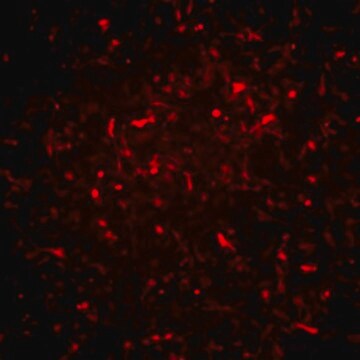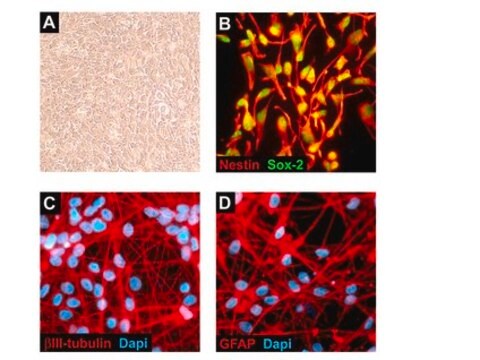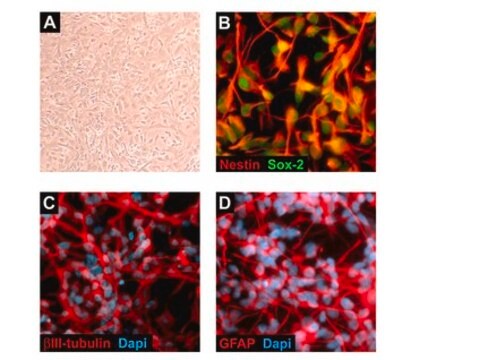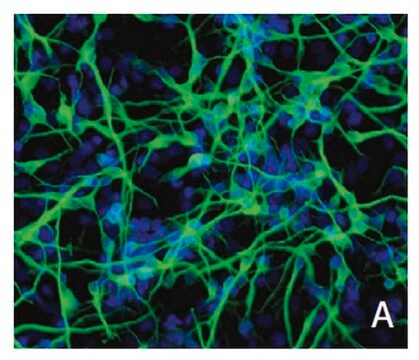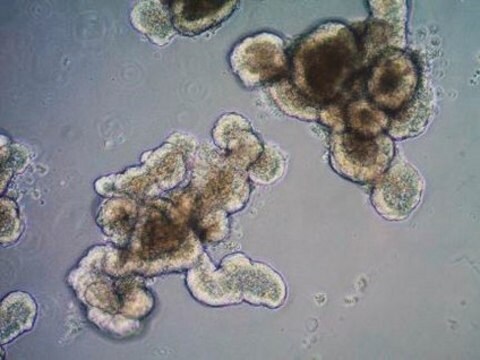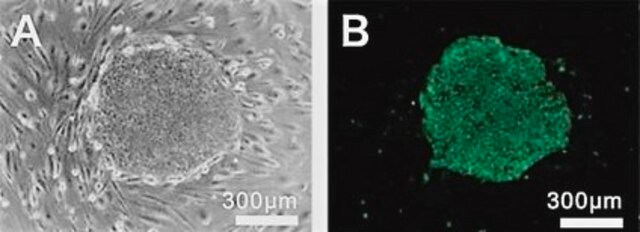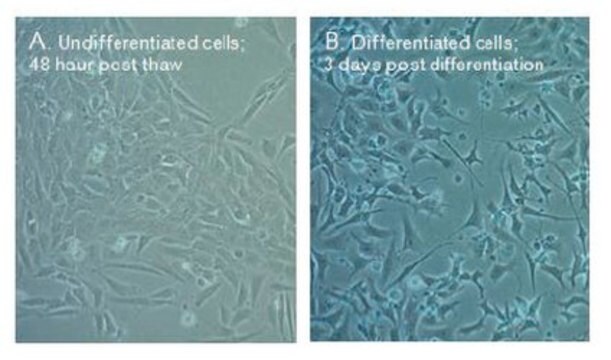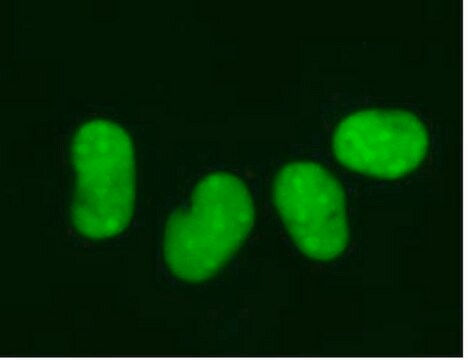SCR526M
Alzheimer w naczyniu™ Lentiwirus APPSL-GFP
Synonim(y):
APPSL-GFP , ReNcell 3D Alzheimers Model, ADID 3D Neural Cell Model
About This Item
Polecane produkty
reaktywność gatunkowa
human
Poziom jakości
metody
cell culture | mammalian: suitable
cell culture | stem cell: suitable
cell differentiation: suitable
Opis ogólny
Niedawno opisano model 3D wykorzystujący genetycznie zmodyfikowane ludzkie neuronalne komórki macierzyste, które nadeksprymują mutacje FAD, aby odtworzyć dwie patologiczne cechy AD: blaszki b-amyloidowe i splątki neurofibrylarne. Lentiwirusy wyrażające mutacje FAD w ludzkim APP z mutacjami K670N/M671L (Szwecja) i V717I (Londyn) (APPSL) i/lub PSEN1 z mutacją E9 (PSEN1(E9)) i APPSL/PSEN1(E9) wraz z białkami fluorescencyjnymi jako reporterami infekcji wirusowej (patrz poniżej), zostały użyte do transfekcji ludzkich neuronalnych komórek macierzystych ReNcell VM. FACS wykorzystano do wzbogacenia komórek o najwyższej ekspresji transgenu, a następnie zamknięto posortowane komórki w systemie hodowli 3D Matrigel. Po około 6 tygodniach różnicowania zaobserwowano agregację AB. Silna akumulacja fosforylowanego tau wzdłuż splotów neurofibrylarnych była łatwo wykrywalna po 10-14 tygodniach.
Alzheimer w naczyniu<TMSYMBOL></TMSYMBOL> Lentiwirus APPSL-GFP jest niezbędnym odczynnikiem do stworzenia systemu hodowli 3D Alzheimera. Lentiwirus zawiera mutacje APPSL FAD i może być stosowany do infekowania ludzkich komórek nerwowych. Znacznik TagGFP2 umożliwia ocenę zakaźności wirusa i pozwala na sortowanie FACS komórek o najwyższej ekspresji.
Zastosowanie
Stem Cell Research
Neuroscience
Komponenty
Note: For exact viral titer, refer to the label on the vial.
Jakość
Przechowywanie i stabilność
Lentiwirus jest stabilny przez co najmniej 6 miesięcy, gdy jest przechowywany w temperaturze -80°C. Po pierwszym rozmrożeniu natychmiast umieścić w lodzie i przechowywać w porcjach roboczych, aby uniknąć dalszego zamrażania. Należy unikać zamrażania, ponieważ spowoduje to spadek miana wirusa.
Ważna uwaga dotycząca bezpieczeństwa:
- Wektory lentiwirusowe z defektem replikacji nie wywołują żadnych chorób u ludzi ani zwierząt. Jednakże, lentiwirusy mogą integrować się z genomem komórki gospodarza i tym samym stwarzać pewne ryzyko mutagenezy insercyjnej.
- Podczas korzystania z tego produktu należy nosić rękawiczki. Należy unikać kontaktu ze skórą lub połknięcia wszystkich odczynników i substancji chemicznych używanych w tym protokole.
- Lentiwirusy należą do grupy ryzyka 2 i należy się z nimi obchodzić zgodnie z zatwierdzonym poziomem bezpieczeństwa biologicznego 2 (BSL2).
Informacje prawne
Kod klasy składowania
12 - Non Combustible Liquids
Temperatura zapłonu (°F)
Not applicable
Temperatura zapłonu (°C)
Not applicable
Certyfikaty analizy (CoA)
Poszukaj Certyfikaty analizy (CoA), wpisując numer partii/serii produktów. Numery serii i partii można znaleźć na etykiecie produktu po słowach „seria” lub „partia”.
Masz już ten produkt?
Dokumenty związane z niedawno zakupionymi produktami zostały zamieszczone w Bibliotece dokumentów.
Protokoły
A stem cell culture protocol to generate 3D NSC models of Alzheimer’s disease using ReNcell human neural stem cell lines.
Protokół hodowli komórek macierzystych do generowania modeli 3D NSC choroby Alzheimera z wykorzystaniem linii ludzkich neuronalnych komórek macierzystych ReNcell.
Nasz zespół naukowców ma doświadczenie we wszystkich obszarach badań, w tym w naukach przyrodniczych, materiałoznawstwie, syntezie chemicznej, chromatografii, analityce i wielu innych dziedzinach.
Skontaktuj się z zespołem ds. pomocy technicznej